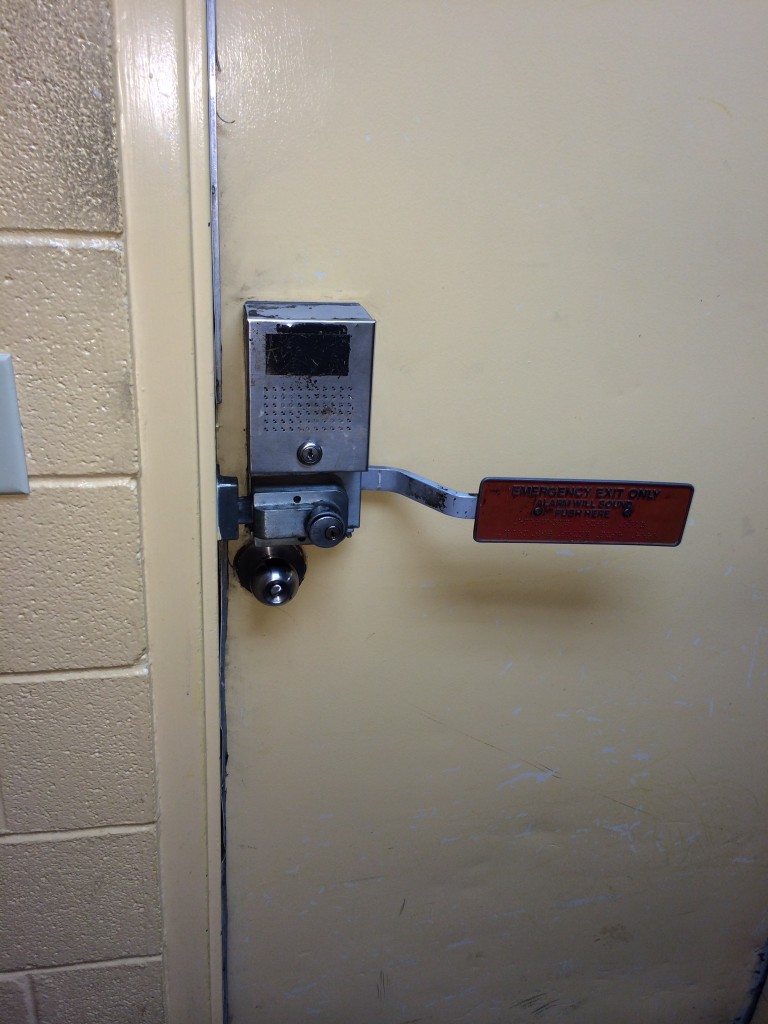Our hearts and thoughts go out to the victims and those affected by the recent mass shooting in the Oregon mall. Acts of violence such as this are a grim reminder to those in our industry of the hefty responsibility to keep our locations as safe as possible for employees and patrons. If there were to be an emergency in one of your locations, would people easily be able to operate the exit doors?
How can the industry improve exit door safety?
 Unfortunately, exit doors that look like the one below are more commonplace than they should be. Everyday convenience and shortcuts are favored over emergency safety, and that’s when fatal blunders like this one occur. It makes me wonder, do we hang on to the Superman mindset we suffered from as teenagers? The “it won’t happen to me” or “those acts of violence/tragedy are rare” thoughts that lead to irresponsibility. As security professionals, we see emergencies regularly and those heart-wrenching occasions humble us, but we’re only useful where we’re installing, inspecting, or specifying. It’s our responsibility to educate as many as people as we can on the frequency of these emergency situations and the consequences of exit doors and hardware that isn’t code compliant.
Unfortunately, exit doors that look like the one below are more commonplace than they should be. Everyday convenience and shortcuts are favored over emergency safety, and that’s when fatal blunders like this one occur. It makes me wonder, do we hang on to the Superman mindset we suffered from as teenagers? The “it won’t happen to me” or “those acts of violence/tragedy are rare” thoughts that lead to irresponsibility. As security professionals, we see emergencies regularly and those heart-wrenching occasions humble us, but we’re only useful where we’re installing, inspecting, or specifying. It’s our responsibility to educate as many as people as we can on the frequency of these emergency situations and the consequences of exit doors and hardware that isn’t code compliant.
Code requirements for exit doors
In case of an emergency, if this door was able to be opened at all, it would take multiple steps to do so. Add to that the possibility of a “stampede” of frantic patrons and employees attempting to escape the fire, active-shooter, or other tragic event, and it would be impossible to operate this door. ADA and fire codes require single action egress for exit doors. Take this time to, not only reflect upon the victims and families affected by the Oregon Mall tragedy, but also to evaluate your facility’s exit doors. All exit doors should be unblocked, unlocked, and fully operational. If you have questions regarding code compliance, or need help with a current issue give us a shout, or leave it in the comments below. We’d love to help.
